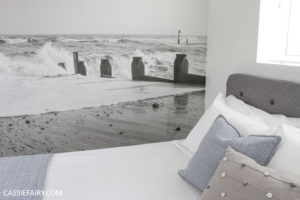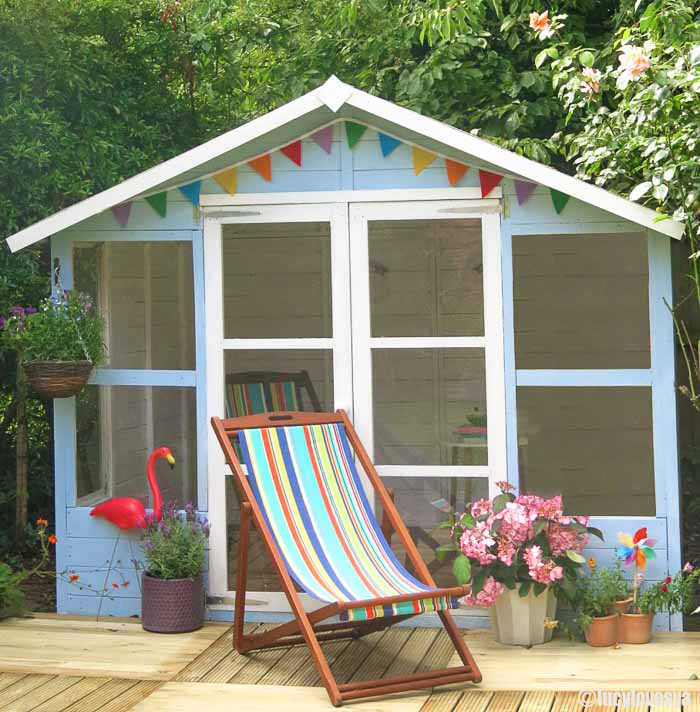Ever since reading Vintage Caravan Style when it was released last month (here’s my book review) I’ve been bursting to get on with my own caravan renovation project. Last week I shared details of my new bookcase and I’m hoping to be able to spend more time out there working. At this moment, this is proving difficult because I don’t have a proper power supply in the caravan so I’m relying on a long extension lead that runs from the house to the caravan at the end of the garden. It’s not ideal but at the moment it’s the only way that I can get on with any projects that require power tools or a sewing machine – I’ve tried sewing with a hand-powered Singer and the novelty wore off pretty quickly! So this week I’ve been investigating ways of getting power out to the caravan on a more permanent basis.
When the caravan first arrived it had all the electrical components fitted for the external vehicle lights to work so that it was safe on the roads, but internally the caravan had a gas stove and even gas lights. Yes, it really was an old caravan and hadn’t ever been upgraded to run on electric. So now that I want to use the space as a workshop rather than somewhere to camp I definitely will need a plug socket or two. I checked out the Critical Power Supplies website to investigate the options for installing electricity and found out that I had a couple of options; running a proper outdoor supply cable to the caravan so that I could have plug sockets etc inside, or installing a solar-powered unit to charge big campervan batteries. I’m very keen on the idea of renewable energy and it would mean that I could actually use my caravan for camping if I ever wanted to go away in it in the future! It’s an easy way to get power for the tools I want to use and doesn’t involve running a cable across the garden, which I prefer. I’m happy to use lamps and don’t need a whole circuit of over-head lighting fitted so that makes the whole process much more simple and the solar-powered battery becomes a lot more feasible! I’m still having a think about it so I’ll let you know what I decide 🙂
The second thing that really needs addressing in the caravan is the window hinges. After changing the window trims and getting a nice tight seal around the windows, I realised that one of the windows couldn’t be opened anymore. This was because the glass has slipped out from the hinges at the top of the window so it’s being supported by the windowsill and the hinges are simply keeping it flat against the side of the caravan. So when I open the window outwards, nothing is supporting the glass and it slides out. This happened a few times while we were fitting the window seals and I’m lucky that the glass didn’t drop to the floor and smash – what an expensive mistake that would have been!! So I’m planning to order a couple of replacement glass hinges from Barrier Components in order to fix the problem. It will be lovely to have an opening side window again so I can’t wait to get this in place. Watch this space for updates!

This article is a sponsored collaboration. The pink links in the content indicate a sponsored link or information source. The blog post reflects my own experience and the sponsor hasn’t had any control over my content 🙂






















2 Responses
Thanks for the tips Candy and the very helpful data sheets, I think a ‘proper’ electric hook up is the way forward! 😀
Great to hear about your caravan project! I’d be a little wary of using a leisure battery for serious workshop stuff. It may sound environmentally friendly, but normal leisure batteries aren’t designed for everyday use so you’ll probably end up replacing them, which isn’t great for the environment. You’ll also need to check carefully how much power your ‘power tools’ use – chances are they will drain a battery quite quickly!
There are some useful data sheets with information about leisure batteries and there use here:
http://www.campingandcaravanningclub.co.uk/helpandadvice/technicalhelp/datasheets/
In particular, see the Solar Power one and Guide to Leisure Batteries.